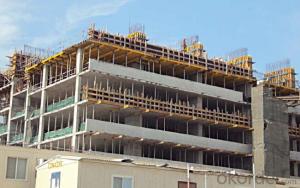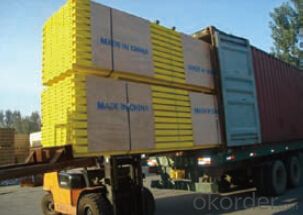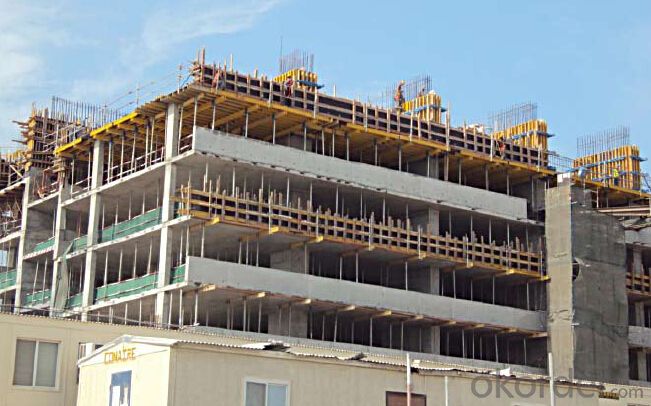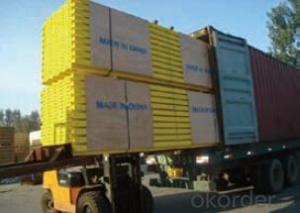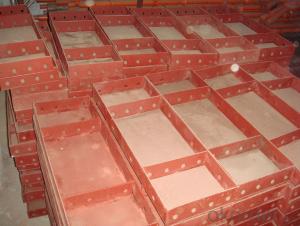Timber-Beam Formwork H-20 for formwork and scaffolding system
- Loading Port:
- Tianjin
- Payment Terms:
- TT OR LC
- Min Order Qty:
- 50 m²
- Supply Capability:
- 1000 m²/month
OKorder Service Pledge
OKorder Financial Service
You Might Also Like
Characteristics:
◆ Standardized production lines.
Supply capability: 3000m/day, Lmax = 6600mm.
◆ Finger jointing of the flange and web, the strength of timber beam is highly improved.
Max. shearing force failure load:40KN
◆ Well treated to prevent from water penetration or erosion, so the service life maximally
extended.
Normally, CNBM timber beam H20 can be used for 4 to 5 years, the exact using time would
depend on maintenance & storage.
◆ Robust caps at the end of the girders protect against damages.


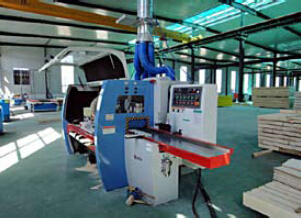
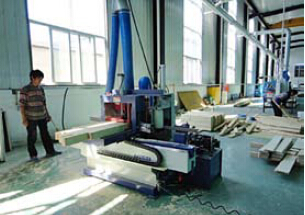
- Q: What are the maintenance requirements for steel formwork?
- The maintenance requirements for steel formwork typically involve regular cleaning to remove any debris or concrete buildup, inspection for signs of wear or damage, and occasional repairs or replacement of damaged components. Additionally, applying a protective coating or rust inhibitor can help prevent corrosion and prolong the lifespan of the formwork.
- Q: How does steel formwork handle concrete shrinkage and expansion?
- Steel formwork is a versatile and durable option for handling concrete shrinkage and expansion. One of the key advantages of using steel formwork is its ability to withstand the forces exerted by the concrete during shrinkage and expansion. Concrete shrinkage occurs as the water in the mixture evaporates, causing the concrete to contract. Steel formwork is well-suited to handle this shrinkage because it provides a rigid structure that can resist the inward force exerted by the contracting concrete. The steel panels and beams used in steel formwork are robust and can maintain their shape under the pressure, ensuring that the formwork remains intact even as the concrete shrinks. On the other hand, concrete expansion can occur due to various factors such as temperature changes or moisture absorption. Steel formwork is designed to accommodate this expansion by incorporating expansion joints. These joints allow the concrete to expand and contract without causing any damage to the formwork. The joints can be easily adjusted to accommodate the expansion, ensuring that the formwork remains stable and secure. In addition to its strength and flexibility, steel formwork also offers other benefits when it comes to handling concrete shrinkage and expansion. It is highly reusable, which means that it can be dismantled and reassembled for use in multiple projects. This not only reduces the overall cost of construction but also allows for easy adjustments to be made in case any changes are required due to concrete shrinkage or expansion. Furthermore, steel formwork provides a smooth and even surface finish to the concrete, minimizing the chances of cracking or unevenness caused by shrinkage. This ensures that the final concrete structure is of high quality and meets the desired specifications. In summary, steel formwork is a reliable and effective solution for handling concrete shrinkage and expansion. Its strength, flexibility, and ability to accommodate these forces make it a preferred choice for construction projects. By using steel formwork, builders can ensure that their concrete structures remain stable, durable, and free from any damage caused by shrinkage or expansion.
- Q: What types of concrete structures can be built using steel formwork?
- Steel formwork is a versatile construction tool that has the capability to build a variety of concrete structures. Some examples of common structures that can be created using steel formwork are: 1. Walls: Steel formwork can be utilized to construct both retaining walls and load-bearing walls. It provides the necessary support to hold the concrete in place until it sets and gains its strength. Steel formwork allows for the construction of walls with different shapes and sizes, such as straight, curved, or inclined walls. 2. Columns: For constructing columns of varying heights and diameters, steel formwork is the ideal choice. It offers a strong and stable framework to hold the concrete in place while it cures. Steel formwork can be easily adjusted to accommodate various column dimensions, making it suitable for both small and large-scale construction projects. 3. Beams and Slabs: Beams, which are horizontal structural members that support the structure above, and slabs, which form the floors or roofs of a building, can also be constructed using steel formwork. Steel formwork allows for the construction of beams and slabs with different shapes and sizes, including rectangular, circular, or even curved configurations. 4. Bridges and Tunnels: Bridges and tunnels commonly rely on steel formwork during construction. It enables the creation of complex structural elements with high precision and accuracy. Steel formwork systems are easily transportable and can be assembled on-site, making them an efficient choice for bridge and tunnel construction projects. 5. Staircases: Steel formwork can also be used to build staircases with various configurations, such as straight flights, spiral stairs, or helical stairs. It provides the necessary support to create the desired shape and geometry of the staircase. Steel formwork ensures the structural integrity of the staircase while the concrete sets and hardens. In summary, steel formwork is a flexible and durable solution for constructing a wide range of concrete structures. Its adaptability, strength, and ease of use make it an ideal choice for various construction projects, including residential buildings and large-scale infrastructure developments.
- Q: Can steel formwork be used for water storage tanks?
- No, steel formwork is not suitable for water storage tanks as it is not water-resistant and may corrode over time.
- Q: How does steel formwork contribute to improved construction efficiency?
- Steel formwork contributes to improved construction efficiency in several ways. Firstly, steel formwork is durable and long-lasting, allowing it to be reused multiple times. This reduces the need for frequent replacement and lowers overall construction costs. Secondly, steel formwork is lightweight and easy to assemble, making it quick to install and dismantle. This saves time and labor during the construction process. Additionally, steel formwork provides a smooth and even surface finish, resulting in high-quality concrete structures. This eliminates the need for extensive polishing or plastering work, further enhancing construction efficiency. Overall, steel formwork improves construction efficiency by reducing costs, saving time, and ensuring superior concrete finishes.
- Q: How does steel formwork handle different concrete surface protection methods?
- Steel formwork offers a flexible and long-lasting solution for constructing concrete structures, with the ability to effectively accommodate various methods of concrete surface protection. Typically made from steel plates or frames, the formwork provides a sturdy and rigid support system for the wet concrete. When it comes to safeguarding the concrete surface, there are multiple approaches that can be employed. These include the application of surface coatings, the use of form release agents, and the incorporation of different types of form liners. Steel formwork is capable of effortlessly accommodating these approaches and ensuring their effectiveness. For instance, when applying a surface coating to safeguard the concrete, steel formwork delivers a smooth and uniform surface that facilitates an even and consistent application of the coating. The steel formwork is resistant to damage caused by coating materials and can withstand the pressure and weight of the wet concrete during the curing process. Likewise, when utilizing form release agents, steel formwork guarantees proper adhesion and prevents any sticking or bonding between the concrete and the formwork. The smooth and non-porous surface of the steel formwork allows for easy application and removal of the form release agents, ensuring a clean and well-protected concrete surface. Moreover, steel formwork can accommodate the utilization of various types of form liners, which are employed to create decorative or textured finishes on the concrete surface. The form liners can be easily attached to the steel formwork to achieve the desired texture or pattern, and the sturdy nature of steel ensures that the form liners remain securely in place throughout the pouring and curing process. In conclusion, steel formwork is highly compatible with different methods of concrete surface protection. Its strength, durability, and versatility enable the easy application of coatings, form release agents, and form liners, resulting in a well-protected and visually appealing concrete surface.
- Q: Can steel formwork be used in areas with high humidity levels?
- Yes, steel formwork can be used in areas with high humidity levels. Steel is a durable and corrosion-resistant material, making it suitable for use in humid environments. However, proper surface treatment and maintenance should be applied to prevent rusting and ensure the longevity of the steel formwork.
- Q: How does steel formwork affect the overall speed of construction?
- Steel formwork can greatly increase the overall speed of construction due to its numerous advantages. Firstly, steel formwork is highly durable and can withstand the pressure of concrete pouring without any deformation or damage. This durability enables multiple reuses of the formwork, eliminating the need to constantly replace it with new materials, thus saving time and cost. Moreover, steel formwork provides a smooth and even surface finish, which reduces the time required for further plastering or finishing work. This smooth finish also ensures accurate and precise alignment of structural elements, resulting in faster and more efficient construction. Additionally, steel formwork is easy to assemble and disassemble, allowing for quick installation and removal. This ease of use eliminates the need for extensive labor and minimizes the time required for the formwork setup, ultimately accelerating the construction process. Furthermore, steel formwork is highly adaptable and can be used for various types of building structures. Its flexibility allows for customization and efficient utilization in different construction projects, increasing the overall speed of construction. In conclusion, the use of steel formwork positively impacts the overall speed of construction by providing durability, smooth finish, easy assembly and disassembly, and adaptability. These advantages result in time and cost savings, efficient construction processes, and ultimately faster project completion.
- Q: Can steel formwork be used for structures with high fire resistance requirements?
- Yes, steel formwork can be used for structures with high fire resistance requirements. Steel is known for its excellent fire resistance properties, as it does not burn or contribute to the spread of fire. Steel formwork can withstand high temperatures and maintain its structural integrity, making it suitable for use in fire-resistant structures.
- Q: Can steel formwork be used in architectural concrete projects?
- Architectural concrete projects can indeed utilize steel formwork. Due to its durability, strength, and versatility, steel formwork is frequently chosen for various construction endeavors, including architectural concrete. By providing exceptional support and stability to the concrete structure, steel formwork ensures that the desired shape and form are maintained throughout the pouring and curing process. Additionally, steel formwork's resistance to warping or bending under the weight and pressure of the concrete is essential for achieving accurate and precise architectural designs. Moreover, steel formwork facilitates easy assembly and dismantling, making it a cost-effective option for architectural concrete projects. Overall, architects and builders seeking to create intricate and aesthetically pleasing concrete structures can rely on the reliability and efficiency of steel formwork.
Send your message to us
Timber-Beam Formwork H-20 for formwork and scaffolding system
- Loading Port:
- Tianjin
- Payment Terms:
- TT OR LC
- Min Order Qty:
- 50 m²
- Supply Capability:
- 1000 m²/month
OKorder Service Pledge
OKorder Financial Service
Similar products
Hot products
Hot Searches
Related keywords

